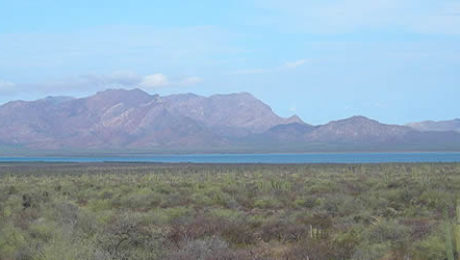Workshop to form hypotheses and develop protocols for examining probable causes of population declines in shorebirds
Project Description We propose to conduct a workshop to establish a methodological framework for testing hypotheses that could explain the decrease in population size of shorebirds in the Western Hemisphere. The shorebird monitoring program in the Northwestern Mexico is coordinated by Terra Peninsular and supported by CRIMBI (USFS) began in 2011 and will continue through
- Published in Awards Program
Bird Inventory and Capacity Building in the Sonoran Sky Islands
Project Description This project will contribute to bird conservation by collecting bird location and abundance data for the SJV’s climate change impact study, providing data for an under-sampled SJV focus area, and by increasing volunteer and professional capacity. Sky Island Alliance will work with bird experts and volunteers—from Mexico and the U.S.—to survey under-sampled habitats
- Published in Awards Program
Distribution and Status Data for Breeding Birds in the Sky Islands and adjacent Sierra Madre Occidental of northwest Mexico
Project Description Information on the distribution and abundance of birds are important for efficient conservation planning, management, and for monitoring changes in populations across time and space. Despite high diversity and significant threats, current information on birds is not available across much of the Sky Islands region of Sonora and in the adjacent Sierra Madre
- Published in Awards Program
Long-term Waterbird Monitoring of Critical Habitat and Priority Species of the Estuaries and Islands of the Eastern Midriff Island Region of Sonora, Mexico
Project Description The Prescott College Kino Bay Center for Cultural and Ecological Studies (PC) proposes to build upon its Waterbird Monitoring Program (WMP) in the Midriff Island region of the Gulf of California. With its permanent presence, partnerships, and proven record of successful waterbird monitoring, the WMP contributes to habitat protection efforts integrating monitoring, research,
- Published in Awards Program
Community participation and ecosystem services as conservation tools that use birds as indicators of habitat value
Project Description Payments for ecosystem services are used by the federal government and are quickly becoming an important conservation tool available in Mexico today. However, lack of data on how to distinguish which habitats are most important for wildlife is still prevalent. El Cúbajo microwatershed is a key area in Southern Sonora and one in
- Published in Awards Program
Monitoring of birds and outreach program in a coastal desert “Ejidal” Reserve, San José de Guaymas, Sonora
Project Description Ejido San José is located in a coastal desert ecosystem, within the Ejido there is a cardon forest of 20 ha with around 400 cardon cacti named “El Sahuaral.” This is one of the last patches of cardon in the area of Guaymas. Cavities in the cacti provide important nesting habitat for birds
- Published in Awards Program
Desert Grassland Conservation in Northern Mexico
Project Description The desert grasslands of Sonora, the southwestern U.S., and northern Mexico are globally important to North American grasslands birds in winter. This project will deliver information on the abundance, distribution, and inter-annual movements of wintering grasslands birds in Sonora, including up to 30 priority species, in relation to other desert grasslands in northern
- Published in Awards Program
Stopover ecology and habitat requirements for molt-migrants in Sonora and northern Sinaloa, Mexico
Project Description Many species of birds, including species of conservation concern, migrate to the “Mexican Monsoon Region” to undergo molt; however, virtually nothing is known about these birds during the molting period. In order to investigate the ecology of these molt-migrants and identify critical habitat requirements for molting, IBP undertook a one-year pilot study, the
- Published in Awards Program
Distribution, Abundance, and Reproductive Status of the Mexican Duck on the Sonoran and Sinaloan Coasts
Project Description The increase in agricultural development in Sinaloa and Sonora in recent decades has caused important changes in habitats where the primary vegetation was originally lowland forest. The hydro-agricultural infrastructure, such as wells, dikes, and drains has supported the emergence of new niches that bird species are taking advantage of in both states. Despite
- Published in Awards Program
Monitoring Program for Wetland Birds in Northwestern Mexico
Project Description A partnership from the U.S. and Mexico will work together to develop a detailed monitoring program for wetland birds in critical sites of northwest Mexico. The program will address issues to standardize sampling schemes, temporality of surveys, field protocols, data integration and reporting, as well as the use and distribution of the information
- Published in Awards Program


 English
English  Español
Español 
